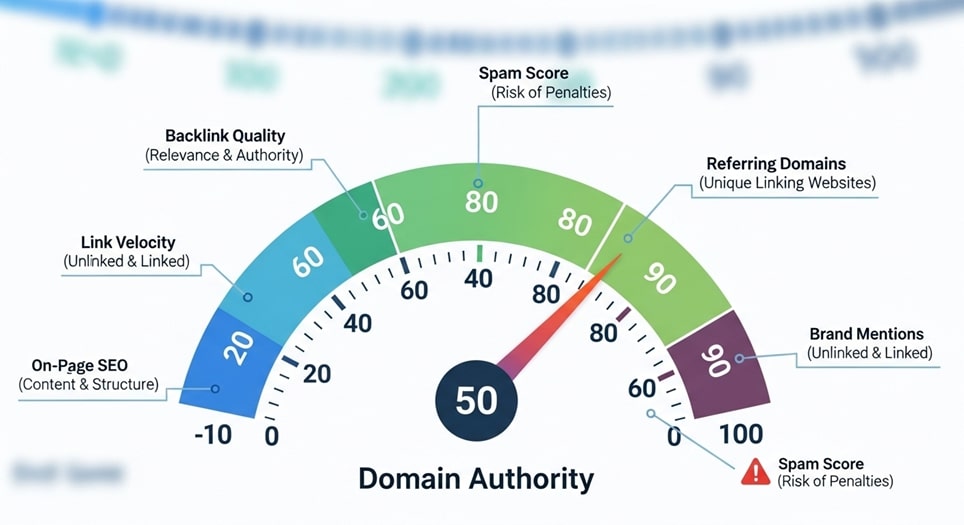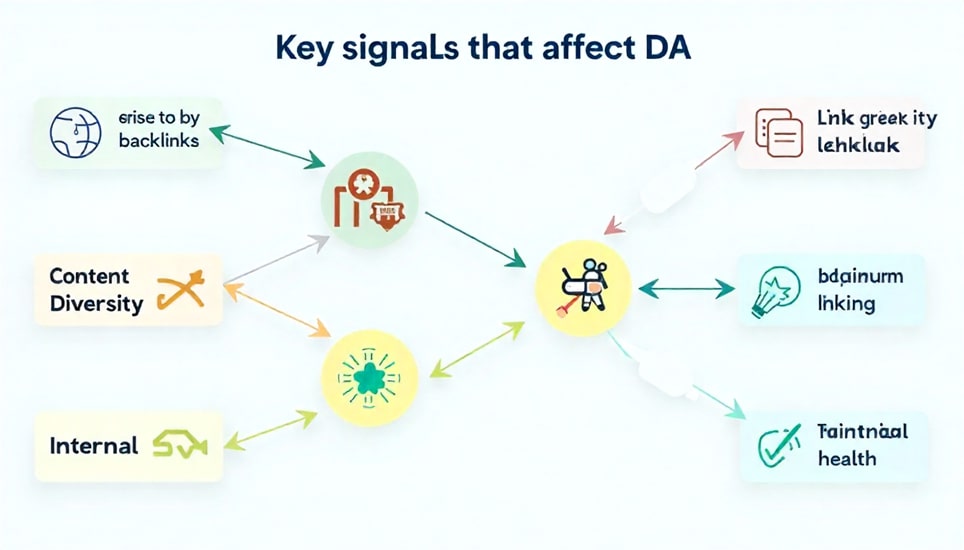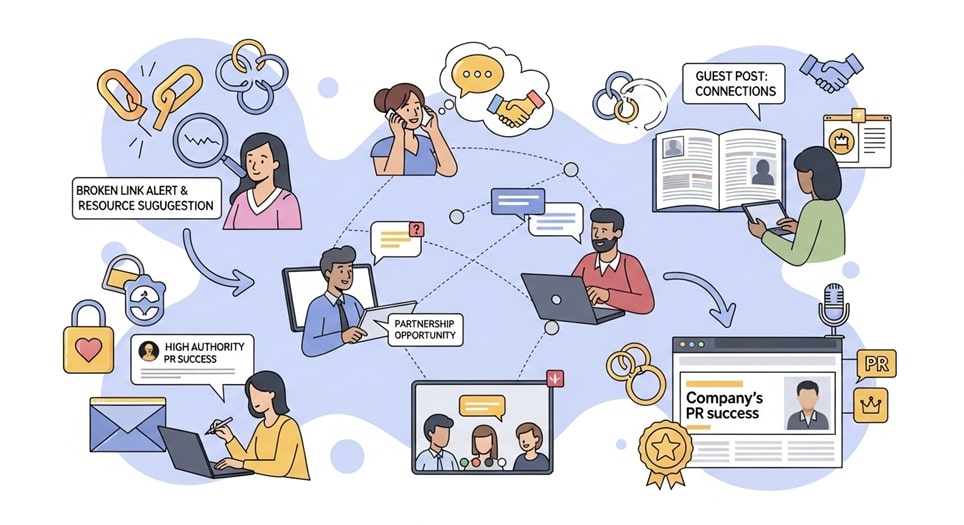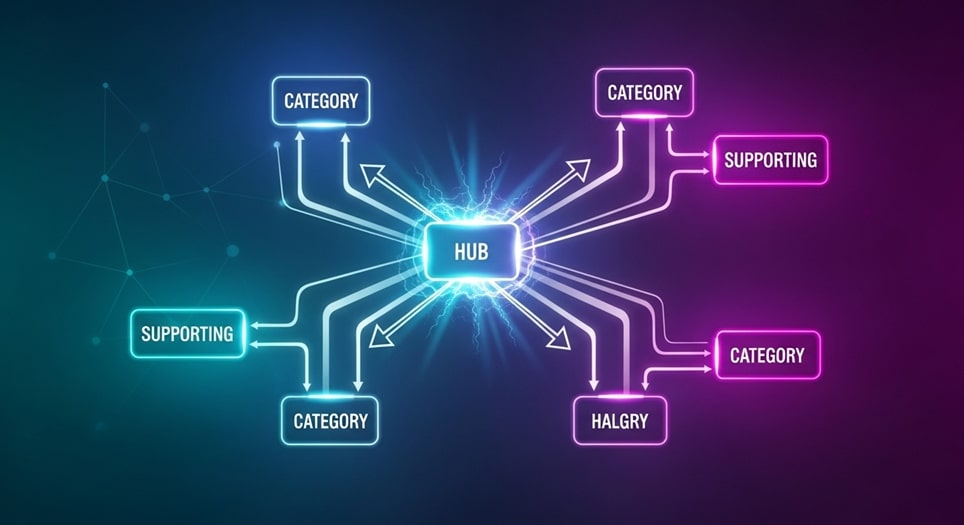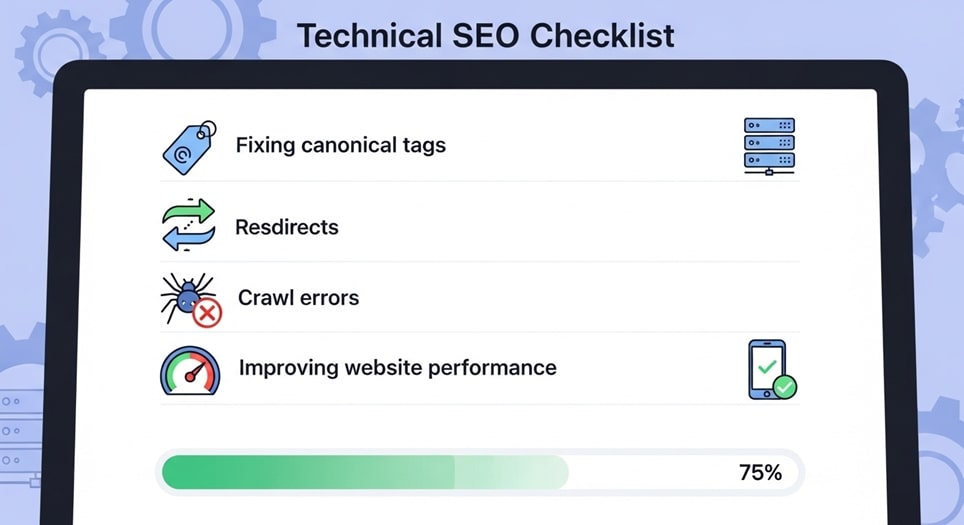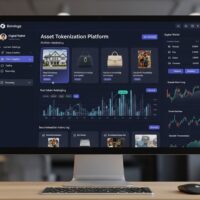Understanding Domain Authority
Domain Authority functions as a comparative metric used widely by SEO professionals to estimate a domain’s ability to rank in organic search by synthesizing backlink signals, referring-domain strength, and related indicators. While it is not a direct ranking input for search engines, Domain Authority offers teams a tangible benchmark for competitive analysis, prioritization, and progress tracking.
Understanding its role helps avoid fetishizing the number itself and instead use it to guide investments in content, link acquisition, and technical improvements that produce measurable business outcomes. The best strategies balance DA with direct traffic, rankings, and conversion metrics.
Given the dynamic nature of search and the rise of AI-driven SERP elements, DA’s strategic utility is that it aggregates many link-related signals into an implementable lens. It helps answer which competitors are genuinely authoritative, which link opportunities are worthwhile, and where content investment will have the most impact.
Modern SEO teams treat DA alongside organic sessions and keyword movement rather than as a sole KPI. Consequently, improvement plans focus on building durable link equity via editorial links, original resources, and consistent technical excellence.
It’s essential to approach DA incrementally. Because the metric is logarithmic, climbing in the low ranges is materially easier than gaining points at very high levels.
Your roadmap should therefore reflect stage-appropriate tactics: foundational technical fixes and targeted outreach for new sites, content-driven PR and large-scale partnerships for mature sites, and ongoing measurement to ensure authority gains correlate with real business value. In short, DA is a compass — not the destination.
Across the article that follows, you’ll find step-by-step implementation guidance, real-world examples, and practical operational checklists designed to scale whether you’re a solopreneur or an enterprise SEO team.
Each section contains multiple paragraphs of concrete instruction, and eight WordPress shortcodes are embedded in their own paragraphs about every 3–4 paragraphs as requested. The content aims to be actionable: audit first, create linkable assets, outreach ethically, fix technical debt, monitor relentlessly, and tie authority gains to revenue-focused metrics.
What Domain Authority Measures and How to Read It
Domain Authority is a third-party score that models the link signals and related features of a domain to predict its ranking potential relative to other domains. The inputs stress backlink quality and the number of unique referring domains, but other signals such as topical consistency, link diversity, and historical link growth patterns influence the score indirectly.
Since it is calculated on a logarithmic scale, a 10-point increase in the 10–20 range is not the same as a 10-point increase in the 60–70 range. Interpret DA as a directional barometer that surfaces where you need to invest to compete.
Because DA depends heavily on backlinks, the kind of links you earn matters: editorial, topical, and contextually placed links are far more valuable than sitewide or low-quality directory links. Additionally, a balanced anchor text profile, a diversity of linking domains, and natural link velocity (consistent growth vs. suspicious spikes) make for a healthy profile.
When auditing, compare your DA and referring-domain distribution to competitors in the same niche to get an accurate sense of the gap you need to close, rather than comparing against global household names where scale is unrealistic.
DA will occasionally move because the provider updates its index or algorithm, not because of changes on your site. That’s why it’s crucial to track DA alongside clicks, impressions, and referrals — the metric is more useful as part of a trend analysis than as a single event trigger for panic. Use periodic snapshots, note when major index updates occur, and always verify whether source-level changes or genuine backlink gains/losses caused the movement.
Strategically, DA is most valuable for triaging link opportunities and estimating the effort needed to outrank specific competitors. When combined with page-level authority metrics and the actual traffic those competitor pages receive, DA becomes a practical guide for which keywords, topics, and content formats are realistic targets for your domain.
Key Signals That Influence Domain Authority
At its core, the strongest influence on Domain Authority is backlink profile strength: the number and quality of unique referring domains. A handful of links from topically relevant and authoritative domains is typically more influential than hundreds of low-quality directories.
Beyond that, link diversity — links from different domain types (blogs, news sites, .edu/.gov pages, industry directories) — indicates broader industry recognition. Additionally, the context of the link — editorial placement inside content relevant to the link’s anchor — is often more valuable than sitewide links placed in footers or sidebars.
Other factors that interplay with DA include internal linking architecture, content topicality, and technical site health. Internal linking affects how incoming link equity flows through your site, so strategic linking from high-authority landing pages to conversion pages maximizes the value of external backlinks.
Content that demonstrates topical depth and continuity helps you earn niche recognition; pages that repeatedly attract links in a subject area reinforce domain-wide topical authority, improving the site’s propensity to rank for related queries.
Temporal signals matter too. Link velocity — the rate at which your domain acquires links — should be steady and sustainable. Sudden, unnatural spikes can trigger manual reviews or devaluation by link-quality algorithms. Equally, maintaining evergreen content and updating research or guides increases the likelihood of continued linking.
Combine these signals (external editorial links, consistent internal structure, topical focus, and healthy technical foundations) to create a resilient authority profile that scores well on DA and translates to long-term search visibility.
To prioritize efforts, map each potential signal to effort vs. impact. Fixing technical problems often yields immediate improvements in crawlability and user experience (high impact, moderate effort). Creating an original research report can generate big, high-quality links (high impact, higher effort). Low-effort, low-impact tasks like directory submissions rarely move the DA needle meaningfully and should be deprioritized.
Comprehensive Baseline Audit: Backlinks, Content, and Technical Health
Start any authority initiative with a full audit capturing three vectors: backlink quality, content value, and technical integrity. For backlinks, export referring-domain lists, identify top referrers, analyze anchor-text distribution, and flag potentially toxic or irrelevant links.
Use at least two backlink-index tools for triangulation, because different providers index different portions of the web and may show different strengths or risks. Document lost links over the past year to spot potential trends or relationship erosion.
The content audit should map every page to its primary target keyword, traffic performance, number of inbound links, and engagement metrics. Identify pages that already attract links but are thin or outdated—these provide low-effort, high-return opportunities if updated with fresh data or richer context. Equally, find pages that compete for the same intent and decide whether to merge, canonicalize, or redirect to reduce cannibalization and concentrate link equity.
Technical audit actions include crawling your entire site to reveal redirect chains, 4xx/5xx errors, orphan pages, XML sitemap issues, and canonical mistakes. Evaluate Core Web Vitals and mobile usability; solve render-blocking resources, compress heavy images, and reduce layout shifts.
These fixes do not themselves build links, but they ensure earned links are properly credited to the intended pages and improve user experience, which strengthens the chance editors will link to and share your content.
Create prioritized action lists from the audit: immediate technical fixes (e.g., broken canonical tags), near-term content upgrades (e.g., turning a thin post into a 2,500-word guide), and medium-term link campaigns (e.g., a data asset for outreach). Having this triage and timeline prevents scattershot work and makes authority-building measurable and repeatable.
Designing Link-Worthy Content: Assets That Naturally Earn Links
Content that earns editorial links typically falls into defined categories: original research or datasets, comprehensive pillar guides, tools and calculators, and high-quality visualizations. Original research provides unique, quotable statistics that journalists and bloggers cite, making it an excellent foundation for PR and outreach. Pillar guides act as canonical references within topic clusters, attracting links over time as they aggregate authority and serve as the central resource for related subtopics.
Tools and calculators are repeatedly useful resources that invite embedding and reference. For example, a well-built ROI calculator or interactive data explorer that solves a specific audience problem can accumulate backlinks as other practitioners link to it as a trusted utility. Make these assets easy to embed (provide an iframe or embed snippet) and include recommended attributes for linking to preserve your preferred anchor text and canonical URL.
Visual assets like infographics can earn links when they present complex data in a concise, easily-sharable format. Always provide an embed code and a short recommended attribution to reduce friction for site owners who want to republish. Combine these formats into a pipeline: quarterly data pieces, monthly guides or deep dives, and evergreen tools that remain relevant for long periods. This combination balances immediate outreach wins with persistent link accrual.
When planning assets, include promotional workflows: prepped journalist lists, outreach sequences, social teases, and repurposing plans (blog snippets, guest post pitches, newsletters). Content that sits unpublished or unpromoted rarely gets links, regardless of quality. Successful linkable content is the sum of great asset creation plus disciplined promotion and relationship work.
Outreach & Relationship-Based Link Building: Methods That Scale
Effective link building is largely people work: crafting personalized pitches, proving relevance quickly, and helping the recipient edit faster. Broken link building remains efficient—identify resource pages in your vertical with 404s, propose your highly relevant replacement, and provide the exact URL and suggested anchor.
This approach is mutually beneficial and often yields a high conversion rate if executed politely and precisely. Use search and link tools to discover candidate pages and narrow outreach to editors who manage quality link pages.
Guest posting is still viable when the content is unique and contextual links are permitted within the body. Target sites that reach your target audience and have editorial standards; avoid low-quality networks or mass guest-post farms. For elite placements, offer exclusive research excerpts, expert roundups, or industry commentary that elevates the host site while allowing for natural, contextual links back to your asset or hub.
Digital PR and data-driven storytelling raise your odds of earning high-authority links. Create a narrative from your data—angle it for journalists, prepare concise press summaries, and offer experts available for quick interviews. Monitor topical news cycles to pitch timely angles and use HARO judiciously to secure placements. Over time, repeated, well-placed PR efforts accumulate high-value mentions that support domain-level authority.
Finally, nurture relationships by tracking editors, providing recurring value, and respecting content calendars. One-off pitches can yield links, but ongoing relationships produce recurring opportunities—guest columns, co-created reports, or interviews that generate multiple link placements and sustained referral traffic.
Internal Linking and Site Structure: Optimize Equity Flow
External links are the fuel; internal linking is the transmission. If you earn high-quality inbound links to pages deep in your site but fail to route that equity to conversion or priority pages, the full benefit is lost. Identify your strongest inbound pages (by referring domains and traffic) and use them as hubs that naturally link to related pages you want to rank. Use descriptive but natural anchor text and avoid stuffing exact-match anchors excessively—think about user intent and readability first.
Consolidation is another key tactic: merge thin or overlapping pages into a single authoritative resource and implement 301 redirects from the old URLs. This reduces internal competition and allows accumulated links to concentrate power on fewer, stronger pages. Keep the site architecture shallow where possible so priority pages are reachable in 2–3 clicks from the homepage, preserving crawl depth and link equity flow.
Category and tag pages can be optimized to capture link equity when they are well-curated with high-quality listings and contextual introductions. But beware: auto-generated low-quality tag pages can dilute authority. Use canonical tags, noindex for thin taxonomy pages where appropriate, and curate category pages as content-rich hubs to support cluster strategies. Regularly audit the internal graph to find orphan pages and fix them with contextual links from relevant hubs.
Tools like site crawlers and internal link visualizers help map equity flow and reveal bottlenecks. Use these insights quarterly to rebalance internal linking toward pages that need additional support due to new content initiatives or priority business objectives.
Technical SEO: Fixes That Preserve and Amplify Links
Technical SEO keeps the architecture healthy so that earned links are properly credited. Key tasks include ensuring canonical tags consistently point to preferred versions, eliminating redirect chains that dilute link value, making sure sitemap files reflect canonical URLs, and addressing crawl errors reported in Google Search Console. For migrations or URL structure changes, prepare a comprehensive 301 map and test redirects carefully to avoid sudden loss of inbound link value. A disciplined release checklist reduces the chance of accidental link equity loss.
Performance optimization increases the user satisfaction and shareability of your content. Improve server response times, minimize render-blocking scripts, implement image optimization and next-gen formats, and use caching/CDNs to reduce latency for global audiences. Faster pages not only improve UX but also increase the likelihood a reporter or blogger will link to your content after experiencing it firsthand. In an environment where editors judge professionalism, performance influences decisions.
Security and reliability are non-negotiable: use HTTPS, set HSTS headers appropriately, and protect against common threats. Ensure uptime and fast recovery strategies in case of outages—heavy traffic from outreach can reveal weak hosting and cause broken pages during critical campaigns. Also, use structured data where appropriate to improve visibility in SERP features, which can increase click-through and secondary linking.
Finally, monitor technical indicators continuously. Tag releases, correlate technical deployments with indexation and referral changes, and maintain a small, rapid-response process for critical regressions. Systematic technical discipline prevents avoidable link and ranking losses.
Measurement, Reporting, and Connecting DA to Business Outcomes
DA by itself is a noisy KPI; the objective is to prove that authority increases generate business value. Track a mix of metrics: referring domains, DA trend, top linked pages, organic sessions, target keyword rankings, referral conversions, and revenue attributed to organic channels. Use dashboards that overlay link acquisition dates with ranking and traffic shifts to help establish causation. This approach clarifies which content formats and outreach channels produce the highest ROI in your vertical.
Set reporting cadences that balance responsiveness with trend stability: weekly outreach and backlink pipeline reviews, monthly DA and referring-domain reports, and quarterly audits of backlink quality and technical health. Include qualitative assessments — new editorial relationships, press placements, and brand mentions — alongside quantitative measures to tell a holistic story about authority growth and reputation building. Present case studies of successful campaigns to internal stakeholders to justify further investment.
For lost or negative developments, implement an incident response: identify lost links, check for site changes or competitor activity, attempt link recovery with polite outreach, and—if necessary—disavow truly toxic links after careful vetting. Maintain a documented playbook so teams know how to act quickly and consistently when serious issues emerge. Over time, this disciplined monitoring and response make authority programs resilient and measurable.
Step-by-Step Implementation Plan
- Audit & Prioritize.Perform a full audit across backlinks, content, and technical health. Export referring domains, top linked pages, and lost link histories. Crawl the site to find redirect chains, broken links, and orphan pages.Map content performance to backlinks and traffic data to identify which assets can be upgraded into link magnets. Prioritize immediate technical fixes and 3–5 content upgrades that are likely to produce early wins. Create a 90-day action list with responsibilities and desired outcomes: technical fixes to reduce friction, content updates to increase linkability, and an outreach pipeline seeded with low-hanging broken link opportunities and resource pages.Document metrics and targets so progress is measurable.Implement quick wins first—fix canonical errors, repair broken pages, and update 1–2 high-potential pages with fresh data. These immediate actions often restore indexation and user experience, enabling your subsequent outreach to land on pages that convert and sustain links over time.
- Build Linkable Assets.Create a prioritized calendar of assets: one major data-driven report, one interactive tool or calculator, and a set of long-form pillar guides. Invest editorial time in the flagship asset to ensure it is unique and genuinely useful. Prepare embedded resources, downloadable datasets, and clear attribution instructions so other sites can link without friction.Coordinate promotional assets with outreach: prepare short press summaries, journalist contact lists, and social snippets. Use email outreach for high-value targets, and a broader campaign for resource pages.Track pickup and referral traffic to refine messaging and next asset choices.Repurpose the flagship content into smaller pieces—guest post angles, visual snippets, and data-driven blog posts—to increase reach while keeping the canonical asset as the primary link target. Over several months, this pipeline should produce consistent, diverse backlinks that raise domain authority.
- Scale Outreach & Relationships.With assets live, scale outreach across multiple channels: broken link replacement, skyscraper outreach, guest posting, and selective HARO responses.Personalize messages using clear reasons why your content fits the recipient’s audience. Test subject lines and pitch angles to optimize reply rates, and log outcomes to identify high-conversion templates.Prioritize relationships—offer exclusive expert commentary, provide early access to data, and follow up with useful updates rather than repeated demands.Build a list of high-potential partners for recurring collaborations like guest series, co-created studies, or podcasts.These deepen partnerships and produce repeated linking opportunities.Measure link quality by referral traffic, topical relevance, and domain health rather than DA alone. Focus on converting single-link wins into networked opportunities that yield multiple references across a cluster of related sites to compound the domain effect.
- Consolidate & Optimize Equity Flow.After collecting inbound links, restructure internal linking to route authority toward conversion pages. Merge thin, overlapping pages into consolidated hubs and implement 301 redirects from the older URLs.Rework navigation and category pages to support topical clusters and make priority pages easier to discover for users and crawlers.Run conversion rate optimization (CRO) for pages receiving high referral traffic but low conversion.Add contextual calls-to-action, relevant offers, and clear next steps to convert link-driven sessions. This turns authority into measurable business results, which in turn justifies continued investment in authority-building activities.Repeat the audit cycle quarterly to catch technical regressions, reclaim lost links, and refresh content that generated earlier wins. Over time, this consolidation and optimization approach compounds to produce a meaningful and defensible increase in both DA and organic revenue.
Advanced Tactics, Risks, and Recovery
Beyond core tactics, high-impact advanced strategies include large-scale digital PR campaigns, publisher partnerships, co-branded research, and sponsorships that are transparent and compliant with publisher policies. These can produce high-authority links quickly, but they require careful planning, clear disclosure, and an understanding of link attributes (e.g., sponsored, nofollow) so you don’t inadvertently trigger penalties or reputation issues. Treat paid placements as awareness tools first and backlink opportunities second.
Negative SEO, link decay, and accidental link loss are real risks; maintain a routine process to monitor backlink quality and act quickly when issues arise. For true toxic links, create a documented disavow process and use it sparingly after reaching out to webmasters for removals. If a migration or technical regression causes link loss, prioritize recovery with redirect fixes and outreach to previously linking domains to restore value.
Brand-building and thought leadership are sustainable advanced tactics. Publish opinion pieces, speak at industry events, and create recurring research series to build publisher familiarity and trust. Strong brand signals make it easier to earn links over time because editors recognize and trust your work. Combine brand work with consistent content and outreach to maximize long-term authority gains.
Finally, prepare a contingency plan: keep a public archive of canonical assets, maintain contact lists for prior linking sites, and record all significant outreach relationships. When a key link is lost, these assets speed recovery and help restore visibility with minimal disruption.
Conclusion
Increasing Domain Authority is a strategic, sustained effort that blends editorial excellence, relationship-based outreach, careful technical stewardship, and disciplined measurement. Treat DA as a directional indicator that helps prioritize work rather than an end goal.
Start with a thorough audit, create genuinely valuable assets that others want to cite, conduct personalized outreach, fix technical barriers, and measure outcomes against business objectives. Over time, consistent execution in these areas builds durable link equity, improved rankings, and measurable organic growth. With a disciplined roadmap and a focus on quality, your domain’s authority and business results will rise together.


